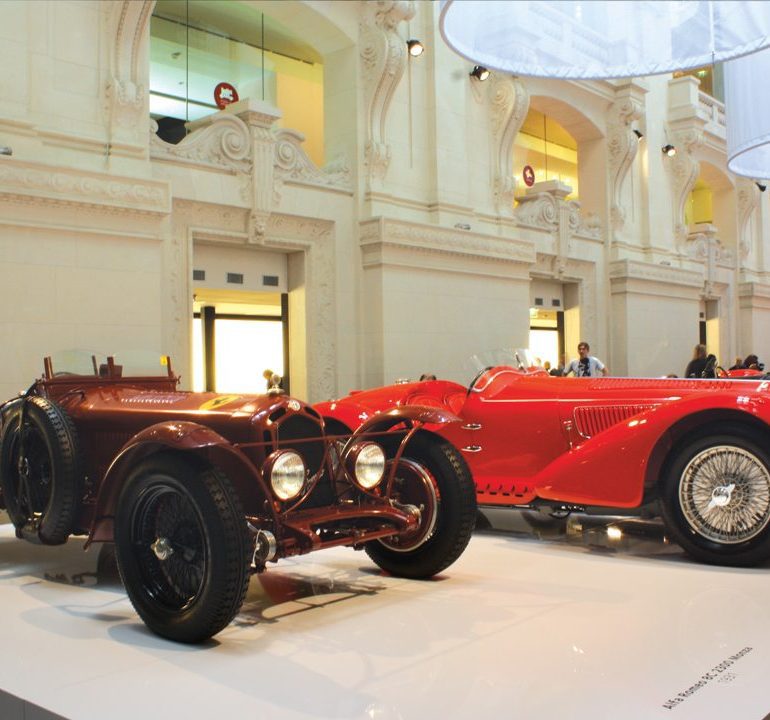The 1920s and 1930s were not only a pivotal time in world history, they proved to be the crucible from which the Italian Alfa Romeo brand would forge its future.
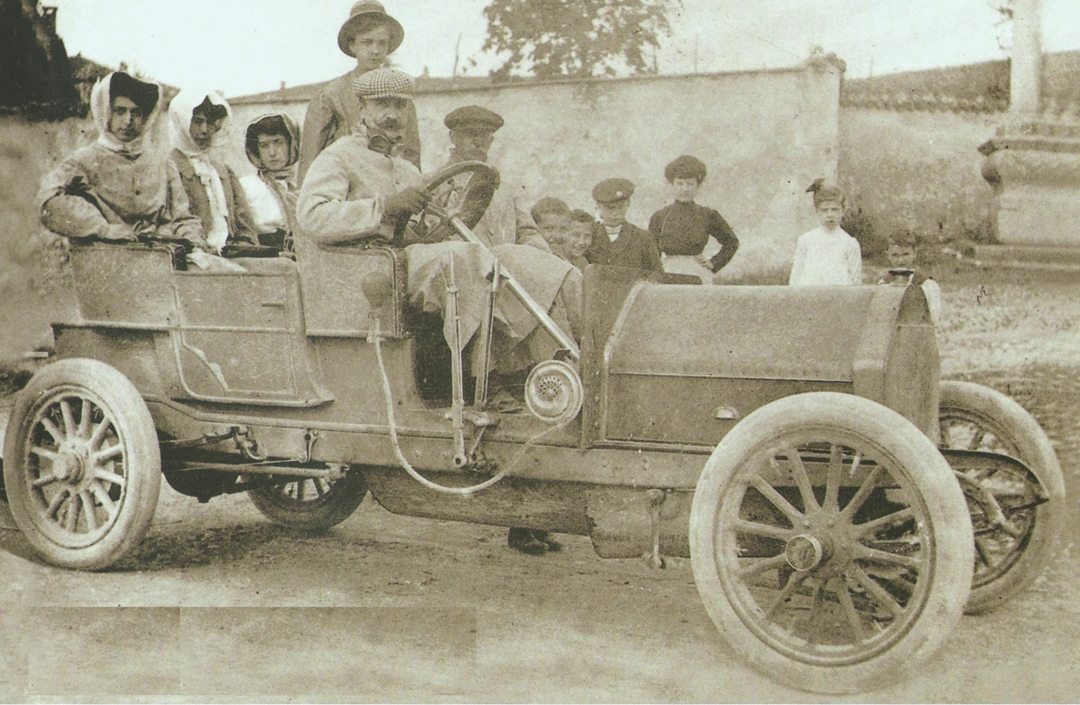
Founded by gifted engineer Giuseppe Merosi, on January 1, 1910, the A.L.F.A. (Anonima Lombarda Fabrica Automobili) marque’s first offerings revolved around Merosi’s somewhat staid 4-cylinder 24-hp power unit. Within a year, Merosi began campaigning his cars in racing events like the Targa Florio, as a way to bring prestige to the fledgling brand and as a way to demonstrate A.L.F.A.’s growing performance prowess.
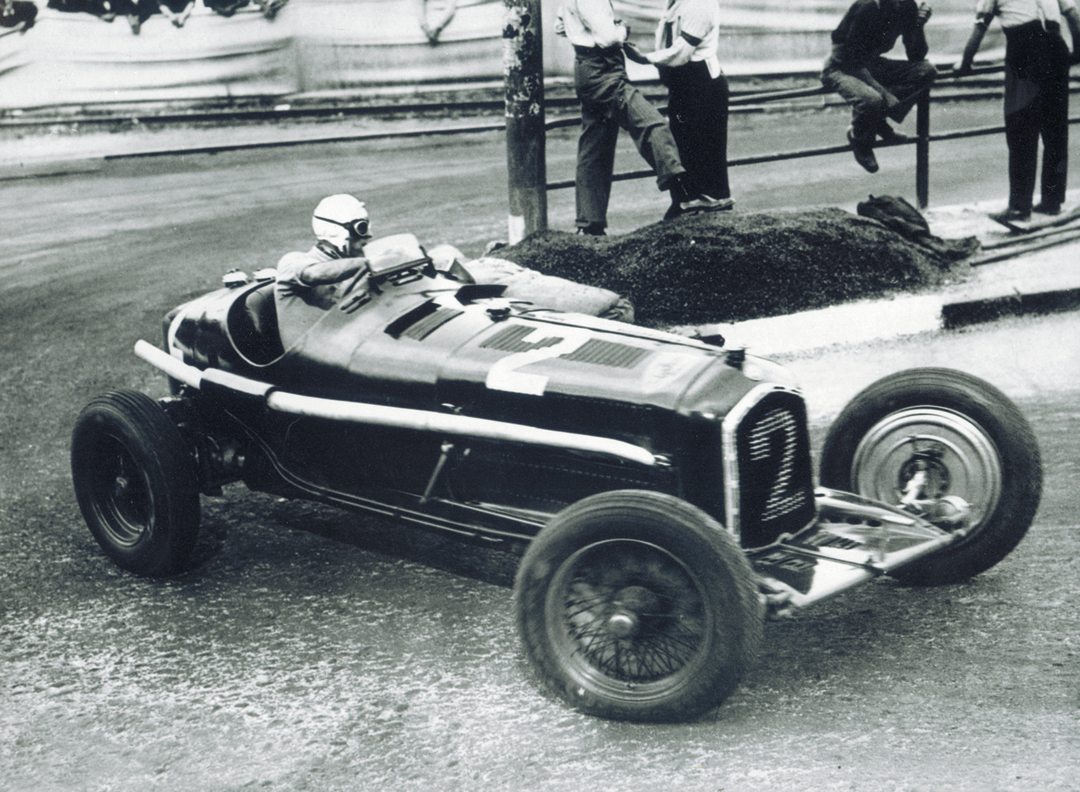
While various racing successes in Italy would follow over the next few years, luck would cast in its hand as Europe soon descended into the clutches of the first World War. With hostilities growing across the continent, A.L.F.A. found it increasingly difficult to sell its motor cars, the result of which being that by December 1915, Merosi’s lender, the Italian Banca di Sconto, sold A.L.F.A. to a holding company owned by Milanese industrialist, Nicola Romeo. While Merosi was forced to go to work in one of Romeo’s companies that manufactured railway equipment, by 1918, he had convinced Romeo that the company he founded should resume the production of automobiles. With Romeo’s eventual, but grudging consent, and Merosi in place as technical consultant, the manufacturing plant at Portello was rededicated to automobile production and the resulting new company was rechristened, Alfa Romeo.
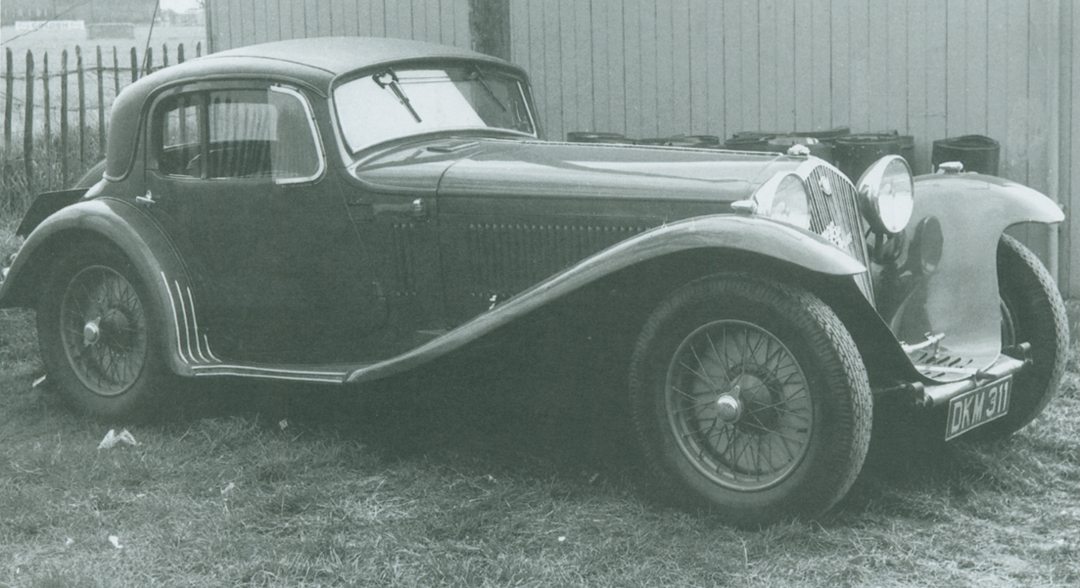
Over the next several years, Alfa Romeo enjoyed a number of international racing successes, most notably with Merosi’s RL design and his swan song the P1, Alfa’s first overhead-cam engine design. However, in 1923, Romeo was encouraged to lure away a brilliant designer from FIAT, in the hopes of further improving Alfa Romeo’s racing prospects. This famed designer was Vittorio Jano, and his inclusion at Alfa Romeo would ultimately drive Giuseppe Merosi to resign from the company he founded in 1926.
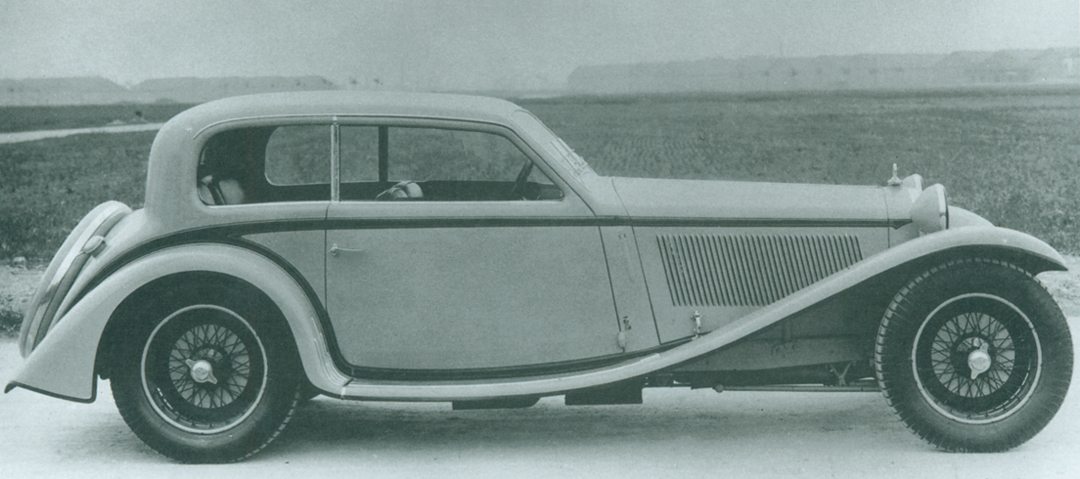
Enter Jano
Jano wasted no time in making his presence felt at Alfa Romeo. His first design was the P2 racecar, a new direction for Alfa Romeo in that it featured a 1,987-cc straight, 8-cylinder engine—the first of its kind in Alfa’s history. This new P2 would prove to be much faster and more competitive than anyone at Alfa would have dreamed, resulting in over 5 years of competitiveness and the claiming of the 1925 World Championship.
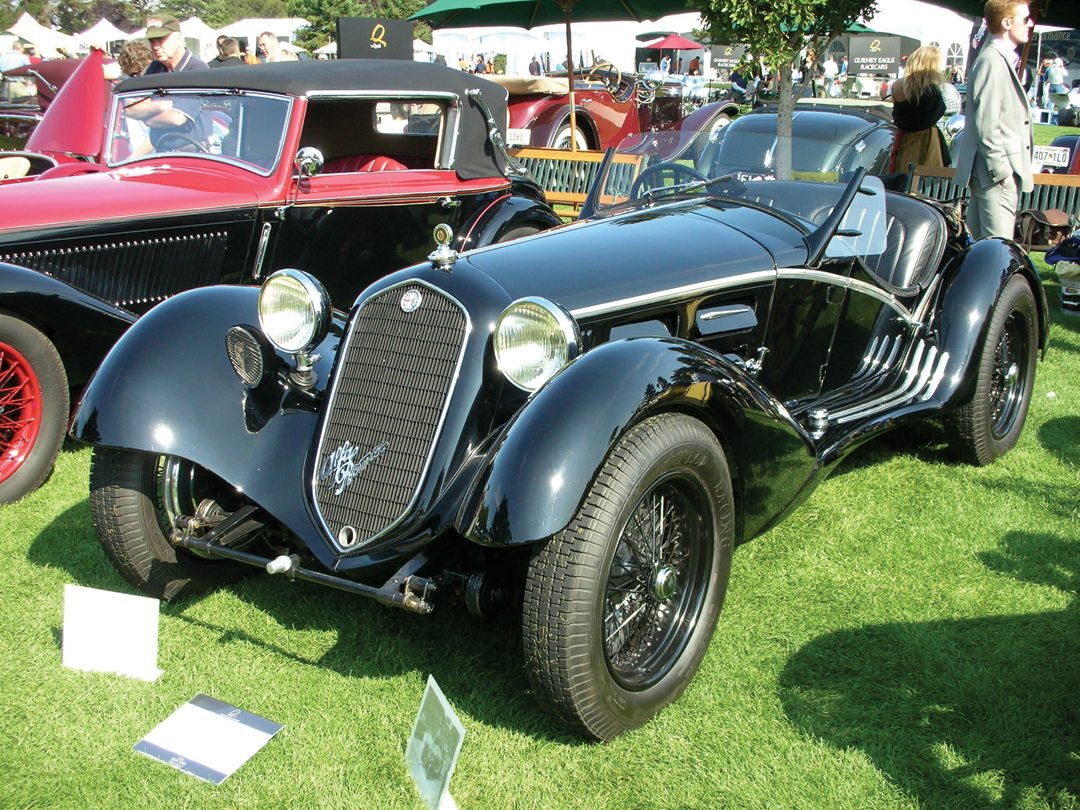
As early as 1929, Jano began work on a new straight-8 engine and a versatile underlying chassis that could be adapted into a variety of road and race configurations. This new engine was unique in that it was essentially two separate, 4-cylinder blocks, joined together at the center, where they would share a common gear train for the activation of twin overhead camshafts and the driving of peripherals such as the oil and water pumps. But perhaps most significantly, this central gear drive would also power a Roots-type supercharger.
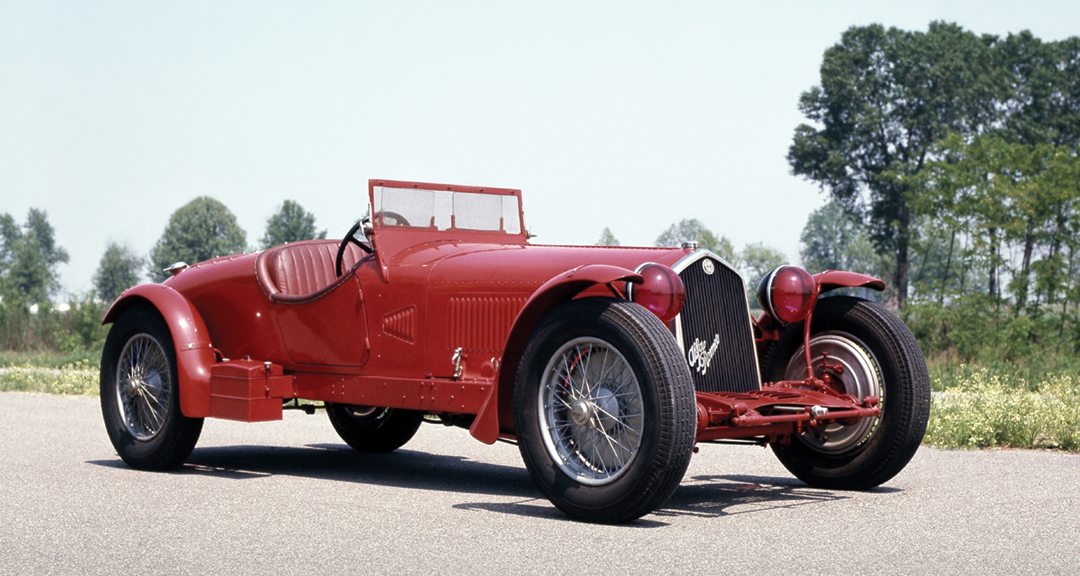
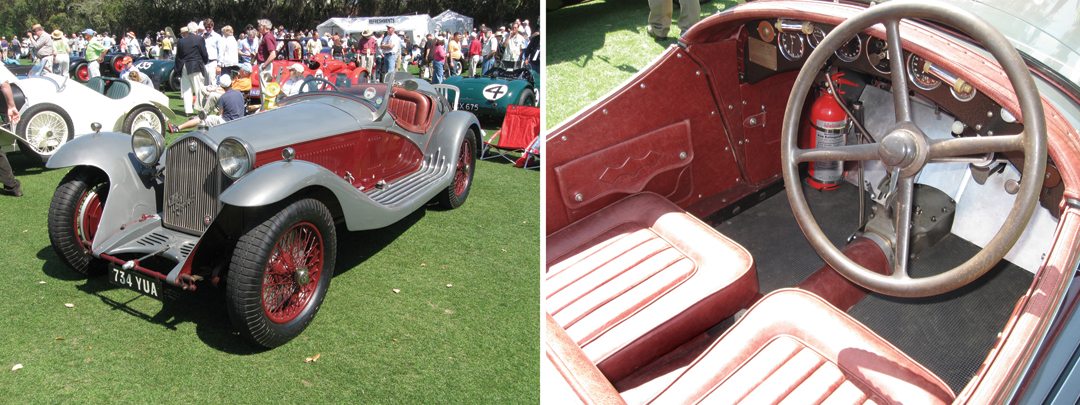
This new “8c” engine would have a total displacement of 2,336-cc, by way of a 65-mm x 88-mm bore and stroke. The twin blocks would be made of cast aluminum and feature steel liners and twin, detachable alloy heads all joined together atop a single cast crankcase/sump. Each block would have its own separate, 5-main bearing crankshaft that would be joined in the center by two helical gears. This central gear drive would in turn drive the dry sump lubrication system, the twin camshafts for each head, as well as the supercharger which drew its charge from a single twin choke Memini carburetor. The result was a powerplant that could produce 140-hp at 5,000 rpm.
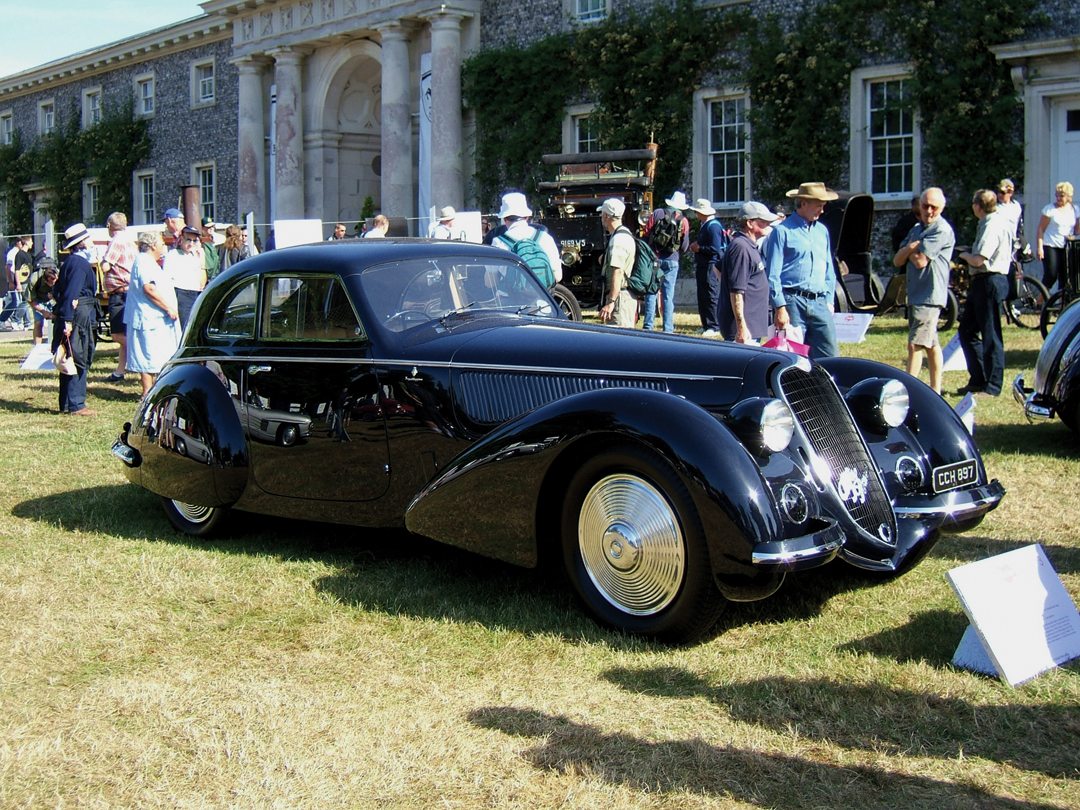
For this new car’s chassis, Jano created two ladder frame options—a corto (short) chassis with a 2,750-mm wheelbase and lungo (long) chassis with a 3,100-mm wheelbase. Both chassis shared a 1,380-mm track.
Making its debut at the September 1931 Paris Salon, this new Alfa Romeo termed the 8c2300, could be ordered custom in either chassis configuration and with a variety of coachwork options. In the case of the corto chassis, this usually consisted of a 2-seat open, or “spider” bodywork, while the elongated lungo chassis, typically received 4-seater coachwork. Due to the corto’s success in races like the Mille Miglia, these cars are sometimes referred to as a “Mille Miglia”, while the lungo chassis’s success at Le Mans resulted in these oftentimes being referred to as an 8c2300 “Le Mans.” While a significant number of coachbuilders constructed bodies for the 8C2300, well over half were built by either Carozzeria Touring or Carozzeria Zagato.
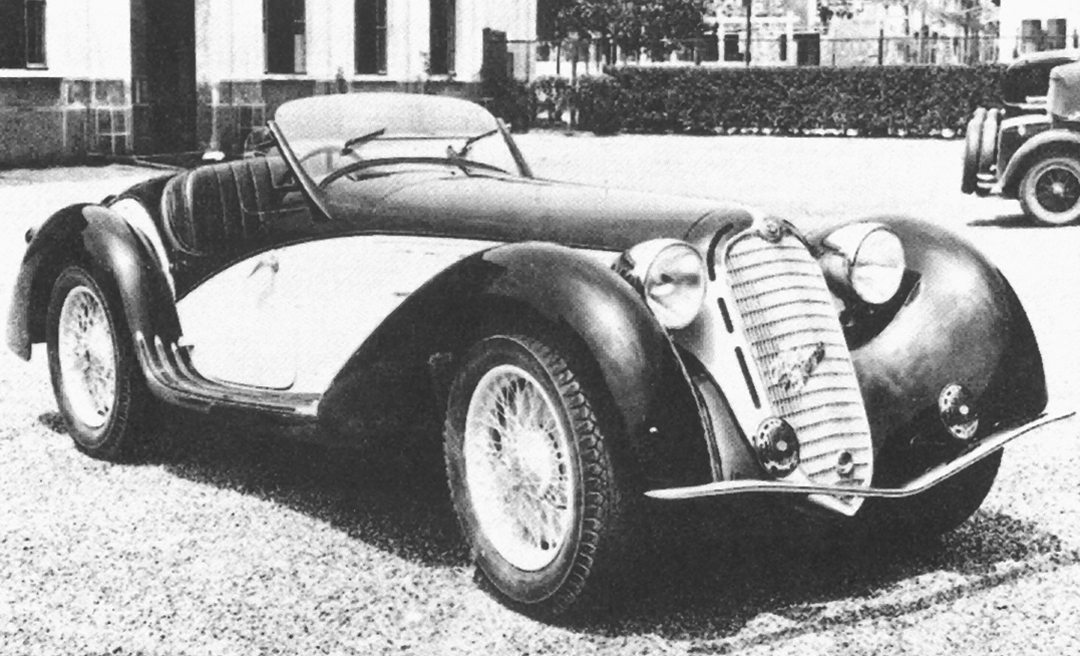
Carozzeria Zagato
Ugo Zagato opened his own coachbuilding business, Officine Zagato, in Milan, in April 1919. By 1923, Zagato moved to larger premises at Viale Brianza and renamed the company Carozzeria Ugo Zagato. Zagato’s approach to coachwork construction was unusual for the time in that, unlike many carozzeria that hung their metal skins over a wooden framework, Zagato chose to construct his underlying framework from right-angled pieces of metal. This “heartier” construction technique combined with stunning design, enabled Zagato to create some magnificent bodies for a number of Alfa Romeo’s 6C 1750 vehicles. As such, when Alfa unveiled the new 8C2300, it was only logical that Carozzeria Zagato would be one of the favored coachworks to provide bodies for both the corto and lungo chassis. However, while Zagato enjoyed critical success based on the style and presence of its designs, starting in 1932, it suffered a string of financial collapses that resulted in the company reforming and being renamed a number of times over the next 20 years. Interestingly, one of these bankruptcies in 1933, resulted in Zagato reforming under the new name Carozzeria Brianza (the name of the street that the Zagato works had been housed at in Milan!), which is why a number of 8c2300s, built in this time period, are ascribed to have coachwork by Brianza, though they look amazingly like Zagatos!
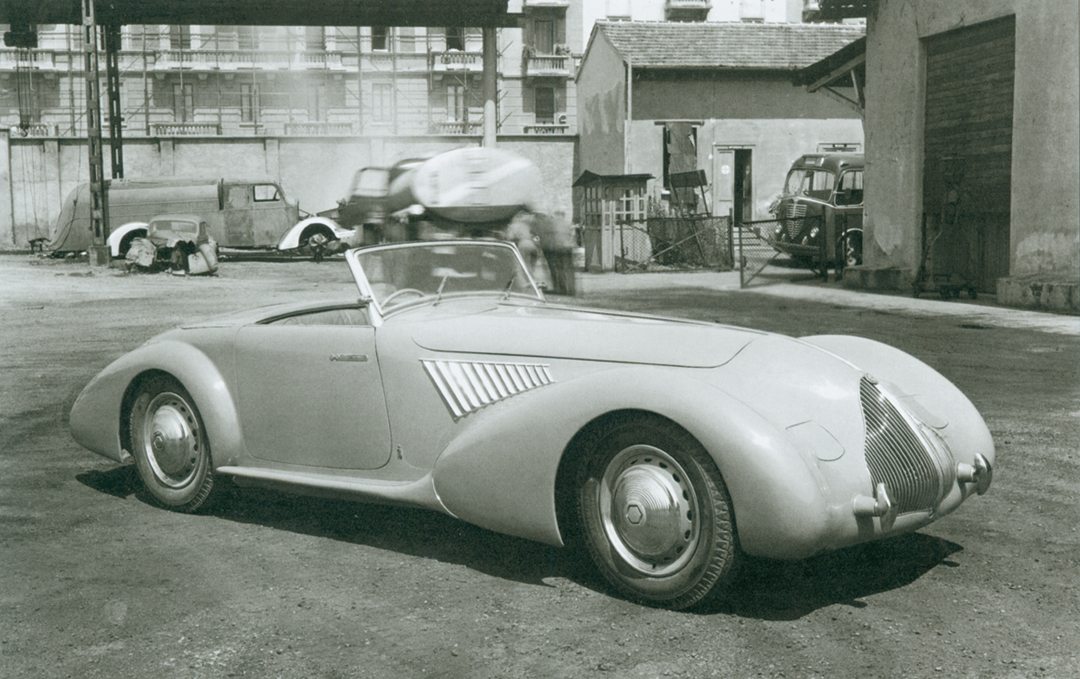
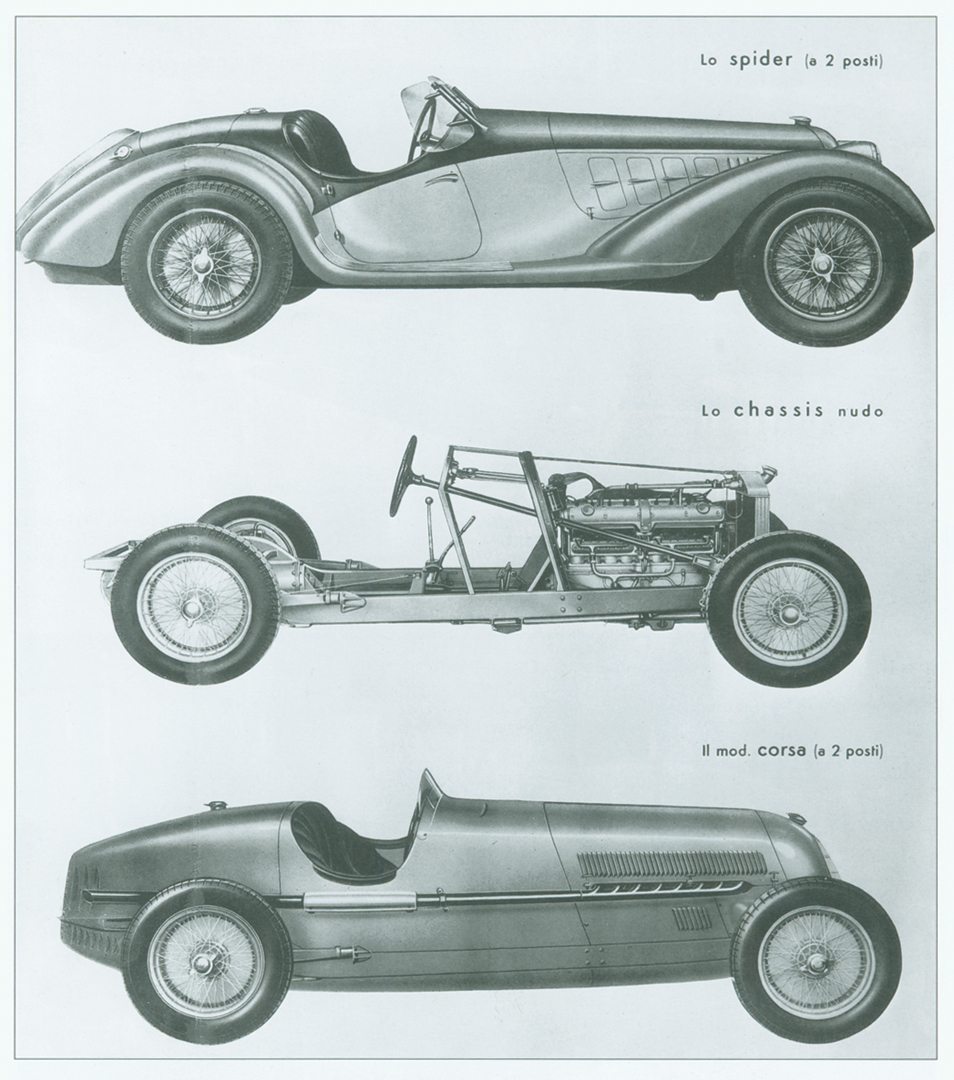
Carozzeria Touring
The other Milanese coachworks that constructed the lion’s share of 8c2300s, was Carozzeria Touring. Founded in March 1926, by Felice Bianchi Anderloni, Gaetano Ponzoni and Vittorio Ascari (elder brother of racer Alberto Ascari), Carozzeria Touring was set up in the former Milanese works of Carozzeria Falco, of which Ascari was the owner.
Like Carozzeria Zagato, Touring was a favored coachworks on such Alfa Romeos as the 6c1500 and 6c1750. In fact, by 1931 when the 8c was introduced, Touring was of such a size that it was producing over 20 bodies per month. As licensee of the Weymann system—a body construction technique utilized in the aircraft industry whereby a fabric body was stretched over a wooden subframe—Carozzeria Touring was able to adapt this system into one utilizing aluminum panels formed over a lightweight tubular framework, which came to be know as the “Superleggera” technique, which featured prominently in the later 8c2900s.
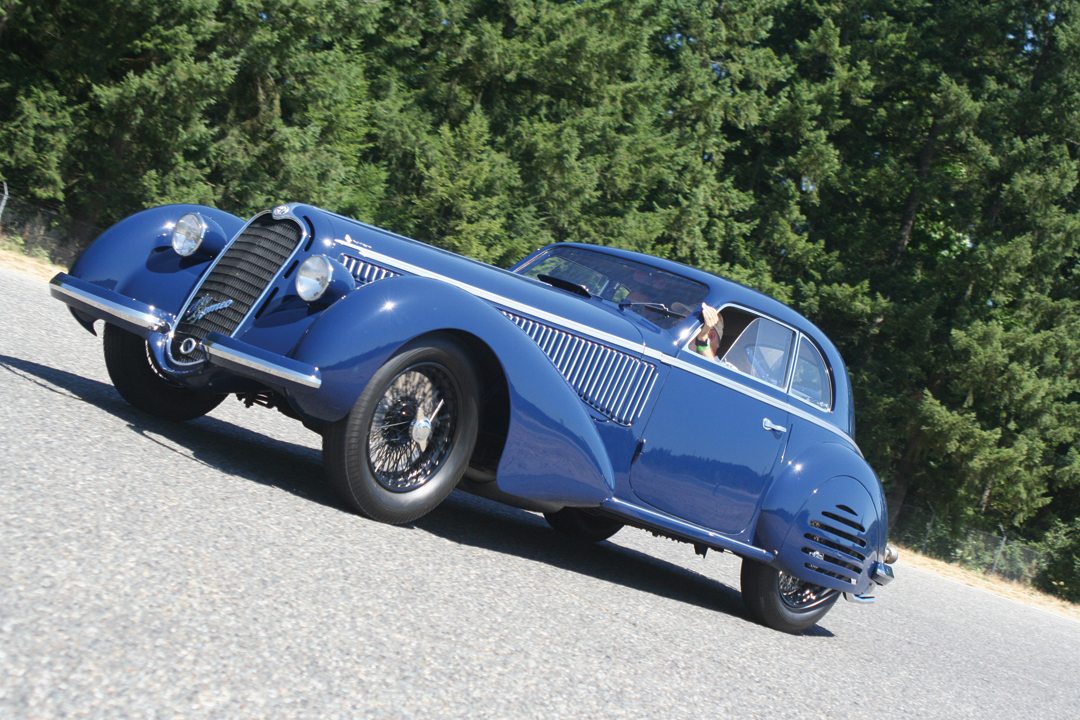
While Touring and Zagato built bodywork for at least half of the 188 8c2300s built, a number of examples were clothed by such Italian Carozzeria as Stabilimenti Farina, Pinin Farina, Viotti, Boneschi, Balbo, Colli and Castagna.
Carozzeria Castagna
Carozzeria Castagna was a venerable Italian coachworks, even in 1931! Carlo Castagna began building carriage bodies in the late 1800s. By 1915, when he died, his son Ercole Castagna was the driving force at Carozzeria C.Castagna & C. having brought in his younger brother Emilio who would be responsible for the majority of designs for the next 20 years. While Emilio left the company in 1933, it was not before he penned a series of elegant drophead coupés for the 8c2300 platform. While much of the work by Zagato and Touring, on the 8c, had been geared toward sport, the slightly more staid Castagna designs were done with a nod toward luxury, further broadening the scope of Jano’s versatile new platform.
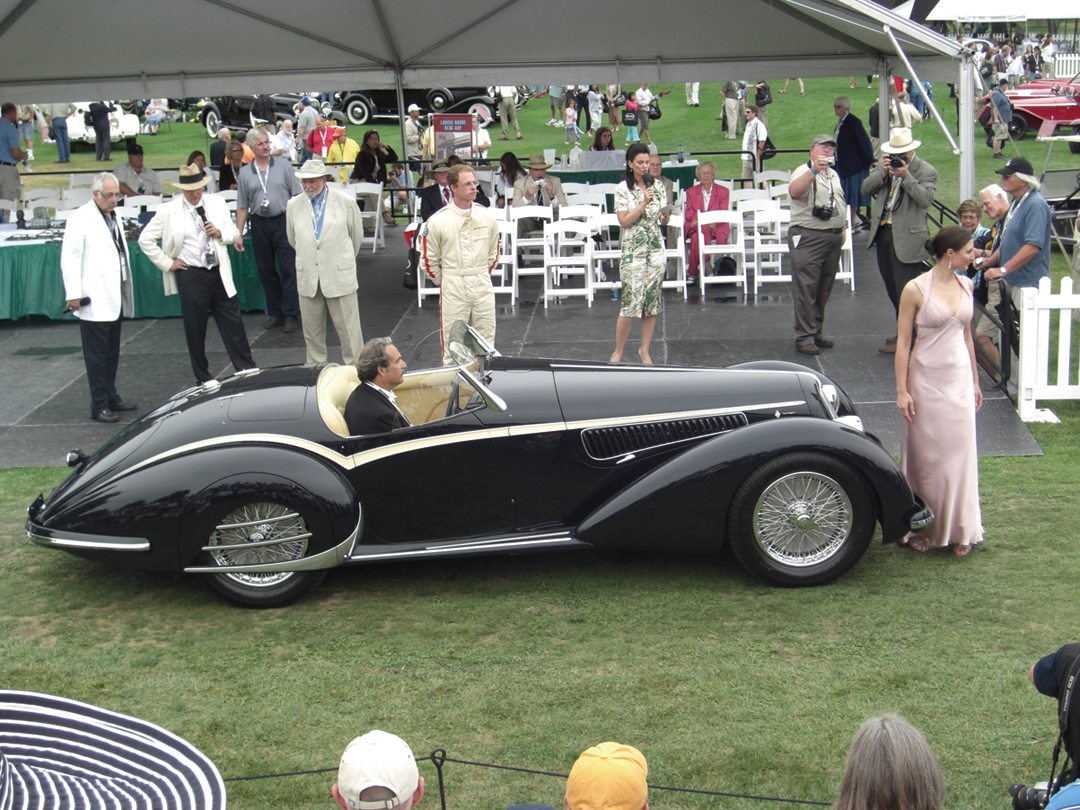
In addition to these Italian coachworks, 8c2300 bodies were also built by Figoni and Van Vooren in France, Graber and Worblaufen in Switzerland, as well as by British coachbuilders like Vanden Plas, Carlton and Motor Bodies. In all, some 189 examples being constructed.
Bigger is Better
For the 1934 racing season, Jano began design work on a larger displacement version of the 8c engine to take advantage of the new 750-kg class rules, which would govern Grand Prix racing. By enlarging the bore of the 8c engine to 68-mm, he was able to raise total displacement to 2902-cc. Another significant design departure from the 8c2300 was that the head and block were now cast as one unit, as opposed to four separate pieces. With this new, 255-hp, 2.9-liter engine ensconced in the Tipo B Grand Prix chassis, Alfa Romeo enjoyed tremendous international racing success in 1934, with a conventional elliptical spring front suspension system, and again in 1935 with a Dubonet independent front suspension.
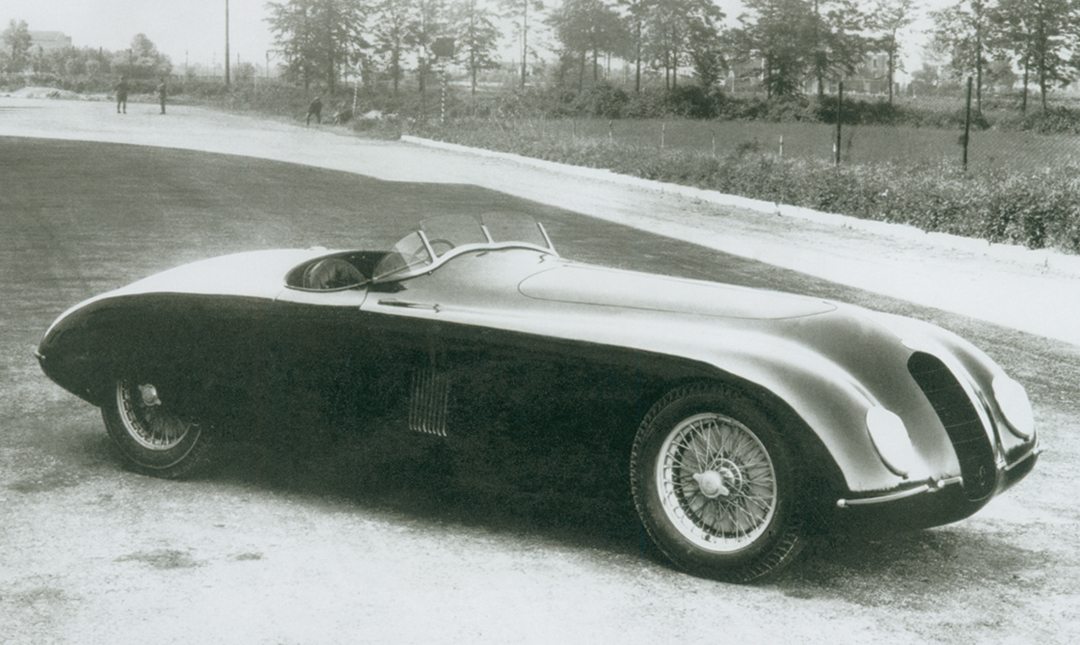
As early as the fall of 1934, Jano began laying down the design of what would in essence become a road-going version of the 2.9-liter Grand Prix car. Using essentially the same corto and lungo chassis arrangement from the 2300, Jano incorporated the new independent suspension that he had penned for the 8C-35 racecar into this new road-going 2900. And like the 2300 before it, rolling chassis would be built and then supplied to a coachworks for creation of a bespoke body to the buyer’s specifications. In the case of the first 8c2900A displayed to the world at the October 1935 Paris Salon, this would be a 2-seater, spider body built by Alfa’s own in-house coachworks. In all, only 11 examples of the 2900A where constructed, as Alfa Romeo built very few automobiles during 1935 and 1936. With the Fascist Mussolini government gearing the country up for what would become World War II, most of Alfa’s production capabilities were being devoted to the production of trucks, busses and aero engines at that time. However, at a time when both Germany and Italy were using their industrial sectors as way of displaying their country’s capabilities and might, the 8c2900 proved to be an excellent PR tool, and with so many different looking variants, gave the impression that many more cars were produced than actually were.
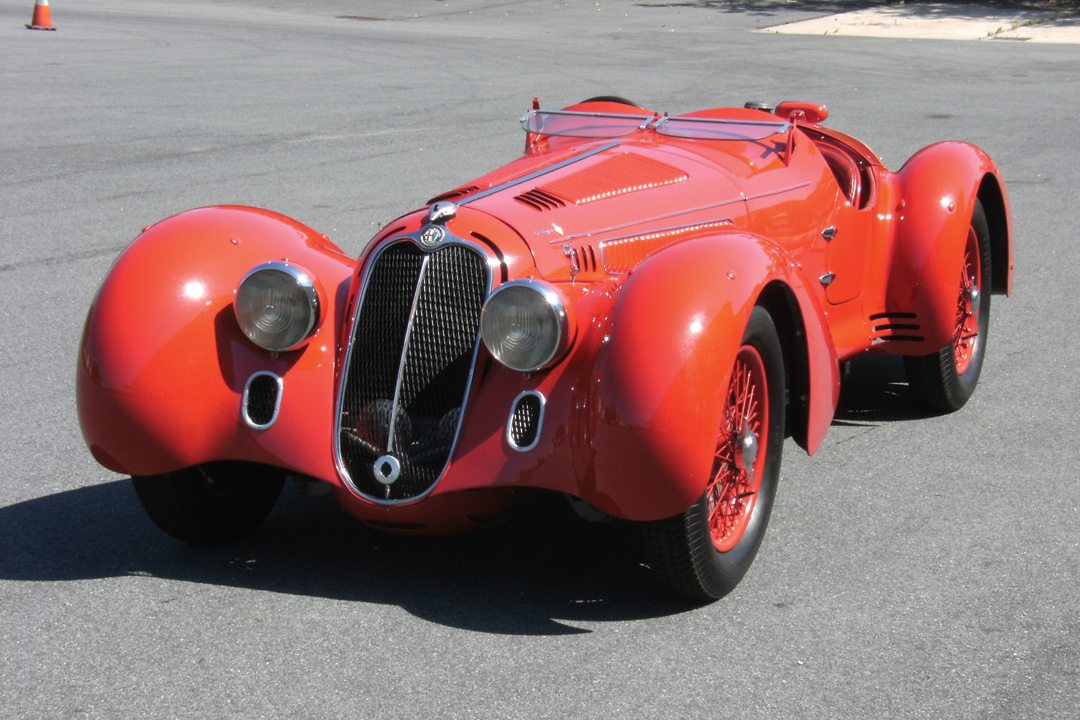
8c2900B
While the 2900A was for all intents and purposes, a sports car version of the Tipo B Grand Prix car, for 1937, Jano designed a new 2900 chassis that from the outset was intended to be a road car. This new 8c2900B came in both a 2,800-mm (corto) and 3,000-mm (lungo) chassis and featured a slightly de-tuned 2900 engine. In essence these were the “supercar” of their day, bespoke automobiles that featured the world’s best performance, the most lavish custom bodywork and a price tag that only the super rich could afford (in excess of 125,000 lire). In all, only 20 examples of the corto and 20 examples of the lungo were built between 1937 and 1939.
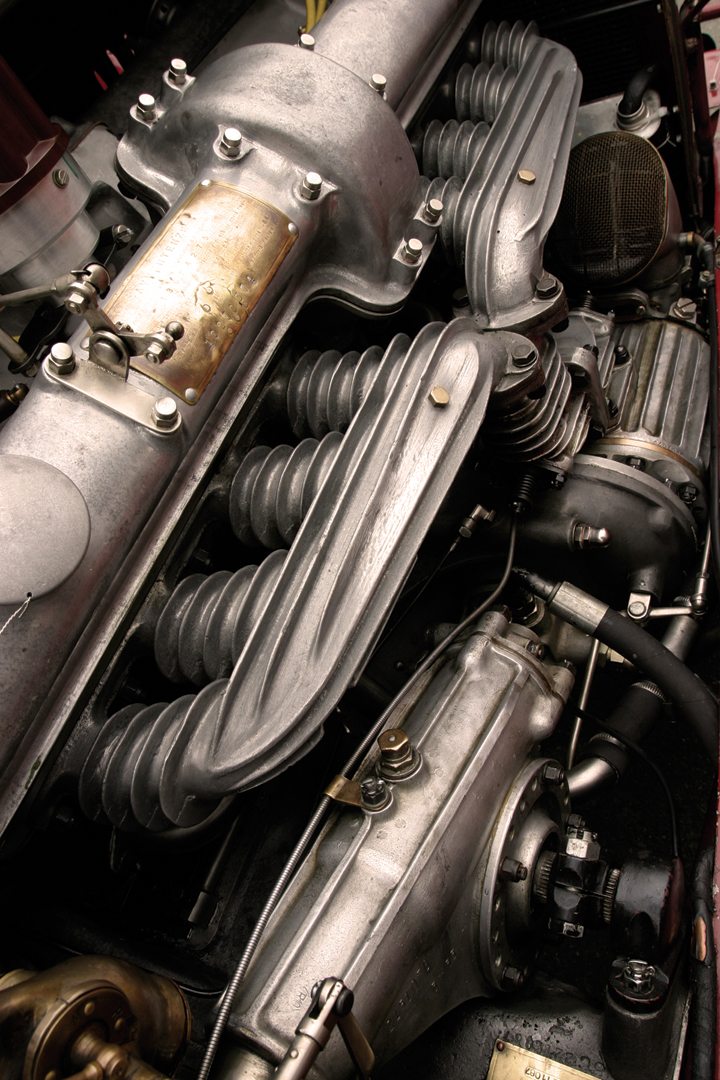
Photo: Dennis Gray
While the 8c2900B certainly ranks as one of Jano’s crowning achievements during his tenure at Alfa Romeo, it would also prove to be his swan song. In 1936, Jano’s boss, Ugo Gobbato, hired a Spanish engineer by the name of Wifredo Ricart. While the reasons remain controversial, Gobbato quickly elevated Ricart to the position of Chief Engineer of Special Projects, which in turn made Jano a direct report to Ricart. Presumably viewing this as a demotion of sorts, Jano found it difficult to work for Ricart and, by 1937, left Alfa Romeo to go to work for Lancia.
80 Years On
The passing of over 80 years has seen the world’s appreciation of Jano’s 8c design only skyrocket. While only a scant 229 examples of the 8c were ever constructed, the car’s timeless style, impact and significance have made it one of the most valuable and sought after collectible automobiles of all time. Today, examples of the 8c have traded hands for as “low” as $2.5 million for an 8c2300 to as high as $16 million for the rare 8c2900. With collectors willing to pay such astronomical prices and with high demand from concours and race organizers to have these cars seen by an enamored public, somewhere Vittorio Jano must be smiling at the irony of the iconic swan song that he created.


